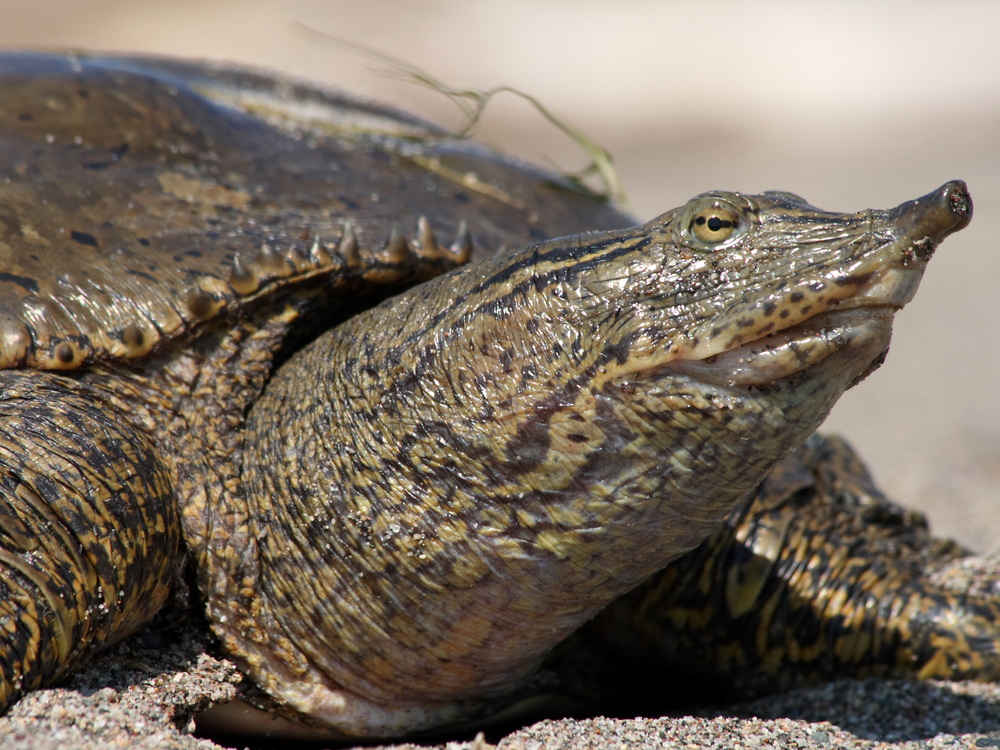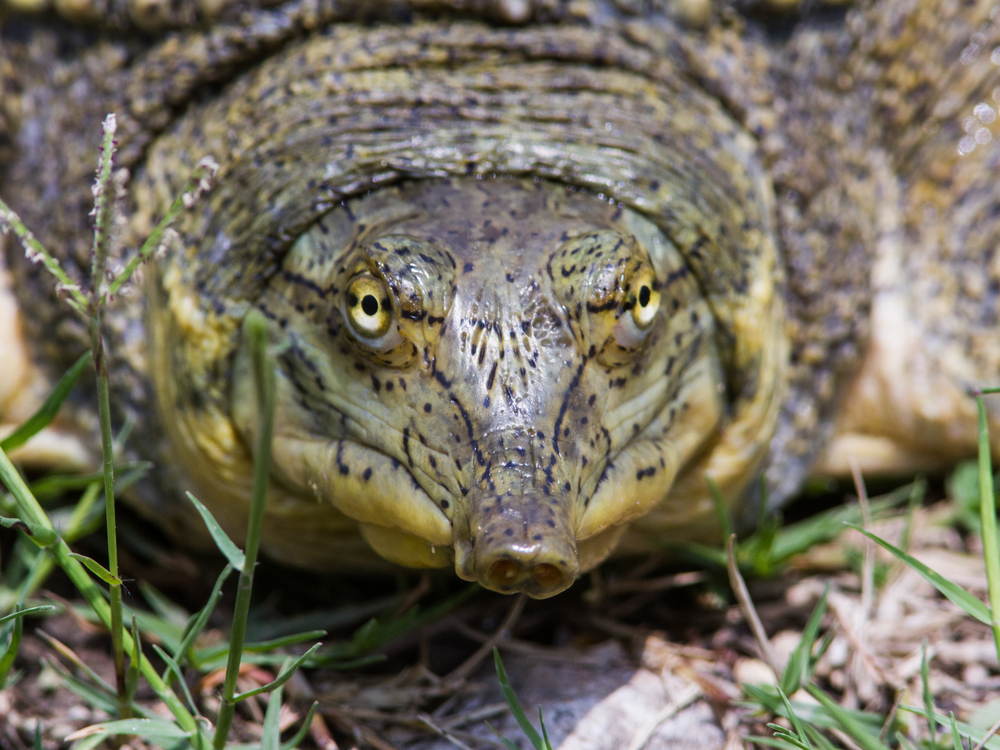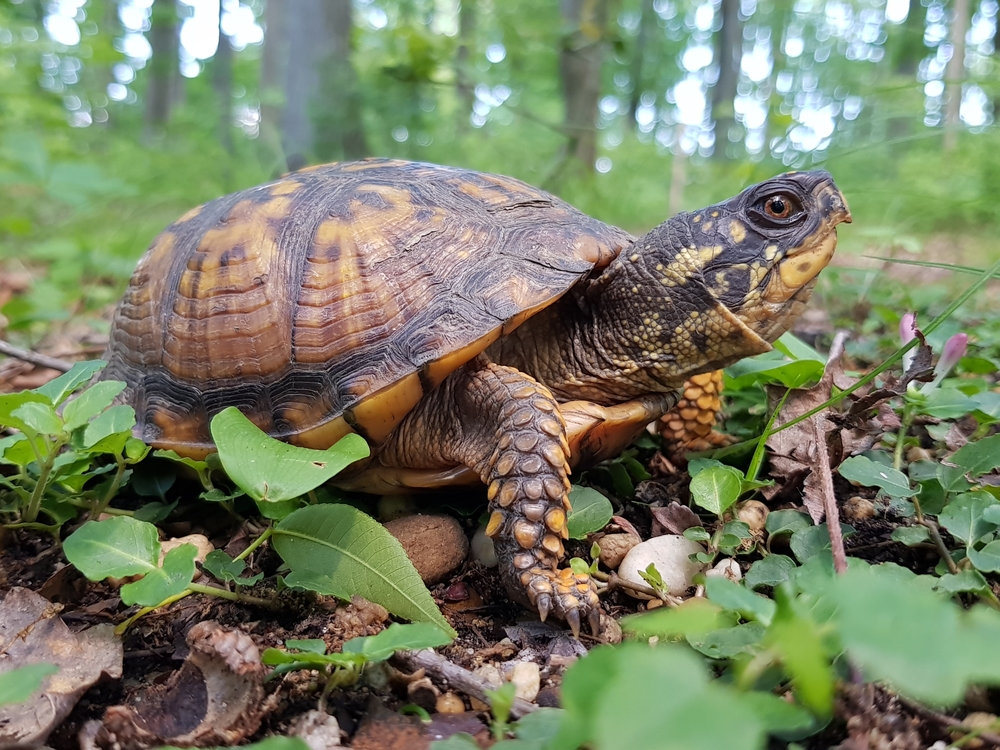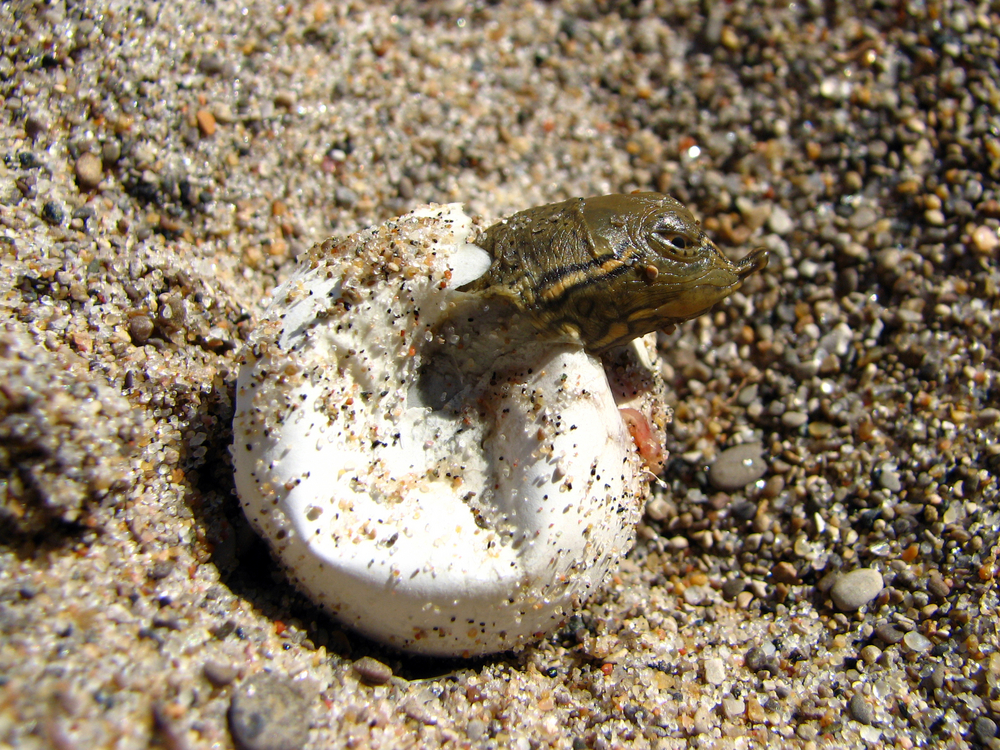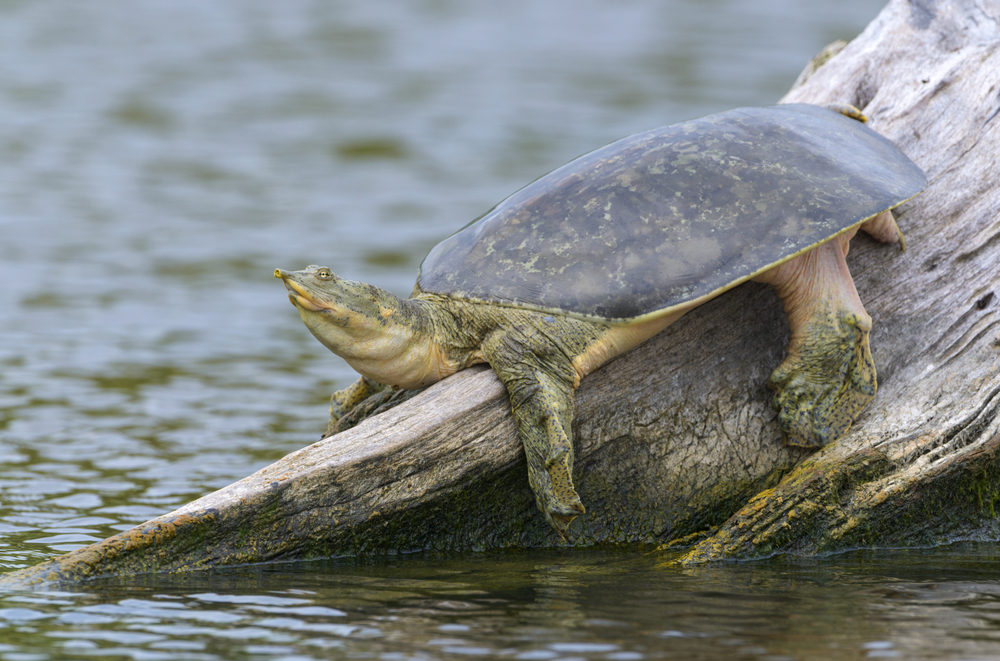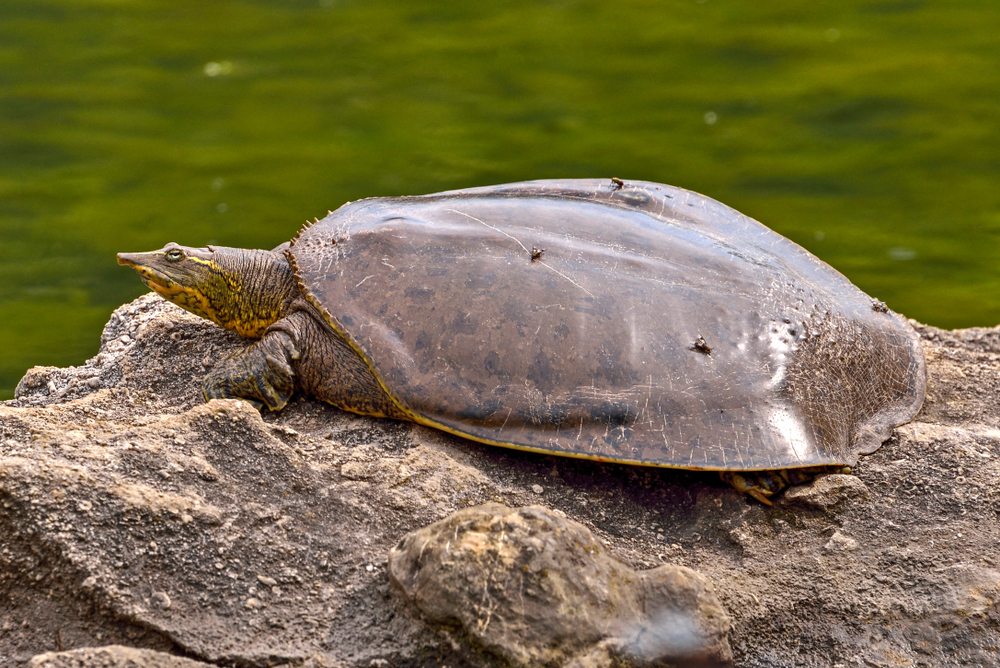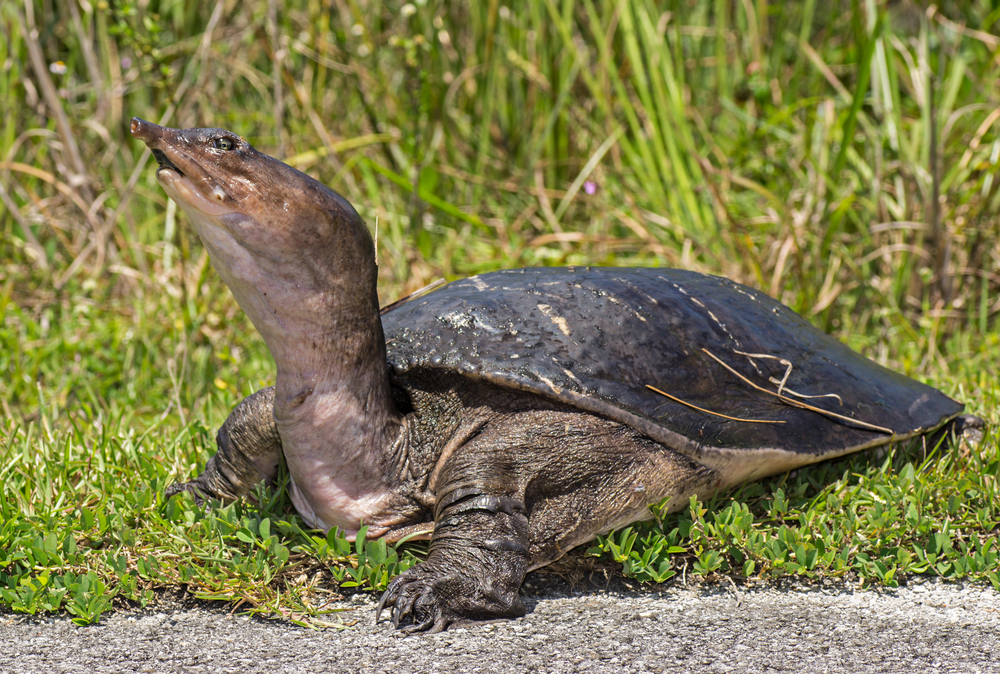There are multiple species of softshell turtles (Trionychidae family), but the exact number may vary based on taxonomic revisions and updates. However, there are approximately 30 recognized species of softshell turtles. These turtles are known for their flattened, pancake-like shells and are found in various freshwater habitats around the world. Each species may have its own unique characteristics and distribution.
About
The Softshell Turtle, scientifically known as the Trionychidae family, represents a fascinating and distinct group of turtles within the Animal Kingdom. These turtles are known for their unique physical characteristics, behaviors, and adaptations that set them apart from other turtle species.
Softshell Turtles are aquatic reptiles and belong to the class Reptilia. They are part of the Trionychidae family, which encompasses a diverse range of species found in various freshwater habitats around the world. What makes them particularly remarkable is their soft and pliable shell, which differs significantly from the hard, bony shells of most other turtle species.
The distinguishing feature of Softshell Turtles is their shell, which lacks the typical hard, scaly plates seen in other turtles. Instead, their shells are covered in leathery skin, giving them a flat, pancake-like appearance. This unique adaptation allows them to move more efficiently in water, making them skilled swimmers and adept hunters.
Softshell Turtles exhibit diverse behaviors and occupy a range of aquatic ecosystems, from rivers and lakes to ponds and marshes. Their intriguing biology and distinctive appearance make them an intriguing subject of study and conservation efforts, highlighting the beauty of the natural world’s diversity.
Physical Characteristics
Softshell turtles belong to the family Trionychidae and are distinguished by their unique, leathery shells and flattened bodies. Unlike most turtles with hard, bony carapaces, softshell turtles have a cartilaginous shell covered in a tough, rubbery skin that gives them their name. They are primarily aquatic and are found in a variety of freshwater habitats across the world, including rivers, lakes, and ponds. The physical characteristics described here generally apply to softshell turtles, with specific references to the Spiny Softshell Turtle (Apalone spinifera) as a representative example.
Size
- Body Length (Shell Length): Softshell turtles vary in size among species. The Spiny Softshell Turtle, for instance, typically has a carapace length of 5 to 17 inches (12.7 to 43.2 centimeters) for males and up to 19 inches (48.3 centimeters) for females, with some individuals reaching larger sizes.
- Weight: Their weight can range significantly, with larger specimens like adult females weighing up to 24 pounds (11 kilograms) or more, depending on the species and age.
Physical Characteristics
- Shell: The most distinctive feature of softshell turtles is their soft, flat shell. The carapace is smooth and lacks the scutes (scales) seen in other turtles, covered instead by leathery skin. In some species, the edge of the shell may have small spines or projections.
- Body Shape: They have a highly flattened body which, along with their soft shell, helps reduce water resistance and allows them to swim with ease. This body shape also enables them to lie flat on the riverbed or bury themselves in sand or mud while leaving their head exposed for breathing.
- Head and Neck: Softshell turtles have a long, flexible neck and an elongated head with a snorkel-like nose. This adaptation allows them to breathe while mostly submerged in water.
- Limbs: Their limbs are webbed and paddle-shaped, perfect for swimming. The webbing extends far out from the body, aiding in their swift, agile movement in water.
- Coloration: The color of the carapace and skin can vary from olive green to brown or gray, often with patterns or spots that provide camouflage against the sandy or muddy bottoms of their aquatic habitats.
- Beak and Jaws: They have a broad, flattened beak with strong jaws. The mouth is equipped with sharp edges that help in capturing and consuming their prey, which includes fish, crustaceans, and aquatic vegetation.
Behavior and Adaptations
- Diet: Softshell turtles are omnivorous, with a diet that can include fish, insects, crustaceans, and aquatic plants. They are adept hunters, using both speed and stealth to catch their prey.
- Breathing Technique: Their long, tubular nostrils act like snorkels, allowing them to breathe while keeping most of their body hidden underwater. This trait is particularly useful for avoiding predators and ambushing prey.
- Habitat: They prefer freshwater environments with soft, sandy, or muddy bottoms where they can easily bury themselves. Softshell turtles are highly aquatic but will also bask in the sun on occasion, usually on soft banks where they can make a quick retreat to water.
Softshell turtles’ unique physical features, particularly their soft shells and streamlined bodies, reflect their adaptation to a life spent mostly in water. These characteristics, combined with their behavior and habitat preferences, make them fascinating subjects of study in the world of reptiles.
Reproduction
Softshell Turtles have a unique reproductive cycle that involves several key stages:
1. Mating: Mating in Softshell Turtles typically occurs in water, where males actively pursue females during the breeding season. Courtship behavior varies among species but often involves male turtles attempting to mount and align with females.
2. Nesting: After successful mating, female Softshell Turtles leave the water to find a suitable nesting site on land. They often select sandy or loose soil areas near water bodies to dig their nests. Some species may travel significant distances from their aquatic habitat to nest.
3. Nest Excavation: Using their front limbs and claws, female Softshell Turtles dig a flask-shaped nest cavity in the soil, similar to many other turtle species. The excavation process can take several hours and involves removing soil and creating a space for egg deposition.
4. Egg Laying: Once the nest cavity is prepared, the female lays a clutch of eggs, which can range from a few to dozens, depending on the species and individual. The eggs are then carefully arranged and deposited within the nest.
5. Incubation: Softshell Turtle eggs are left to incubate naturally in the warmth of the surrounding environment. The incubation period varies depending on temperature but generally ranges from 45 to 90 days.
6. Hatchling Emergence: When the eggs are ready to hatch, the hatchlings use their egg tooth to break free from the eggshells. After emerging from the nest, they make their way to the nearest water body, guided by their innate instinct to seek aquatic habitats.
It’s important to note that Softshell Turtles exhibit temperature-dependent sex determination, where the temperature during incubation influences the sex of the hatchlings. Warmer temperatures typically result in female hatchlings, while cooler temperatures lead to males.
Softshell Turtles’ nesting behavior and reproductive cycle are essential for their species’ survival. They contribute to the next generation by ensuring the successful development and emergence of hatchlings, who enter the aquatic world to begin their journey.
Lifespan
The lifespan of Softshell Turtles can vary between individuals and species and is influenced by factors such as environmental conditions, predation, and human impacts:
Lifespan in the Wild:
- In their natural habitat, Softshell Turtles can have a lifespan ranging from 10 to 50 years, depending on the species and the specific environmental conditions of their habitat.
- Some individuals may live longer, while others may have shorter lifespans due to predation, disease, and other factors.
Lifespan in Captivity:
- Softshell Turtles kept in captivity often have the potential for longer lifespans compared to their wild counterparts.
- In well-maintained captive environments, they can live well into their 30s, 40s, or even longer, given proper care and suitable living conditions.
Biggest Threats to Softshell Turtles: Softshell Turtles face several threats in both wild and human-altered environments:
- Habitat Loss: Urbanization and habitat destruction result in the loss of suitable nesting sites and foraging areas for Softshell Turtles.
- Pollution: Water pollution, including runoff of chemicals and contaminants, can negatively affect Softshell Turtles and their aquatic habitats.
- Illegal Collection: Softshell Turtles are sometimes collected for the pet trade, despite regulations in many areas. This collection can have a detrimental impact on local populations.
- Climate Change: Climate change can influence the sex ratios of hatchlings and affect the timing of nesting and hatching, potentially disrupting the reproductive cycle.
- Predation: Softshell Turtles, especially hatchlings and juveniles, are vulnerable to predation by various wildlife, including raccoons, birds, and larger fish.
- Fishing Bycatch: Softshell Turtles can become unintentional bycatch in fishing gear, leading to injuries or fatalities.
Conservation efforts are essential to mitigate these threats and protect Softshell Turtle populations. Measures include habitat preservation, public education, responsible pet ownership practices, and regulations to prevent illegal collection and trade. Understanding the challenges facing Softshell Turtles is crucial for their long-term survival in their native habitats.
Eating Habits
Softshell Turtles have unique feeding habits and dietary preferences that align with their aquatic lifestyle. Here’s a description of their eating habits and what they typically consume:
Diet:
- Aquatic Prey: Softshell Turtles are primarily carnivorous, with a diet that predominantly consists of aquatic prey. They are skilled hunters and feed on a variety of aquatic organisms, including:
- Fish: They often consume small to moderately-sized fish, using their agility and sharp jaws to capture their aquatic prey.
- Crustaceans: Softshell Turtles readily feed on crustaceans like crayfish, crabs, and shrimp, using their dexterity to extract the meat from shells.
- Aquatic Insects: They also consume a variety of aquatic insects, such as dragonfly nymphs and aquatic beetles.
- Amphibians: Tadpoles and frogs are occasionally on their menu, especially in areas where these prey are abundant.
- Carrion: Like many aquatic turtles, Softshell Turtles are opportunistic scavengers. They feed on carrion, including dead fish and other animals they encounter in their aquatic habitat. Carrion provides an additional food source when live prey is scarce.
Feeding Behavior:
- Softshell Turtles are adept swimmers and hunters in water. They rely on their streamlined bodies and webbed feet to navigate through aquatic environments in search of prey.
- Their elongated necks and flexible, pointed snouts allow them to extend their heads quickly to capture prey with precision. Their sharp beaks are well-suited for grasping and consuming various types of aquatic prey.
- Softshell Turtles often lie partially buried in the substrate of the water’s bottom, with only their eyes and nostrils exposed. This stealthy behavior helps them remain hidden while waiting for potential prey to approach.
- When prey is within striking distance, they employ swift head movements and a powerful bite to capture their quarry.
- Softshell Turtles are typically nocturnal hunters, becoming more active and feeding during the night when many aquatic prey species are also active.
Their specialized feeding adaptations and hunting strategies make Softshell Turtles efficient and successful predators in their aquatic habitats. They play an essential role in controlling populations of various aquatic organisms and help maintain the balance of food webs in freshwater ecosystems.
Uniqueness
The Softshell Turtle is a distinctive and unique species of turtle, possessing several characteristics and adaptations that set it apart from other turtle species:
- Flexible, Leathery Shell: The most striking feature of Softshell Turtles is their soft, leathery shell, in contrast to the hard, bony shells of most other turtles. This flexible shell allows them to move more efficiently in water and bury themselves in the substrate, enhancing their swimming and hiding abilities.
- Streamlined Body: Softshell Turtles have a streamlined and flattened body shape, making them agile swimmers and well-suited for an aquatic lifestyle. Their webbed feet resemble flippers, aiding in propulsion through water.
- Unique Feeding Adaptations: Softshell Turtles have elongated necks and pointed snouts, which they can extend rapidly to capture prey with precision. Their sharp beaks and specialized hunting techniques make them effective aquatic predators.
- Aquatic Habitat: These turtles are highly adapted for aquatic life, rarely venturing onto land except for nesting. They are often found in a variety of freshwater habitats, including rivers, lakes, ponds, and marshes.
- Nocturnal Behavior: Softshell Turtles are typically nocturnal, hunting and feeding during the night when many of their prey species are active. This behavior contributes to their success as aquatic predators.
- Temperature-Dependent Sex Determination: Similar to other reptiles, Softshell Turtles exhibit temperature-dependent sex determination, where the temperature during incubation influences the sex of hatchlings. Warmer temperatures tend to result in female hatchlings, while cooler temperatures lead to males.
- Terrestrial Nesting: Female Softshell Turtles leave the water to nest on land, exhibiting terrestrial nesting behavior. This is distinct from many other freshwater turtles that nest closer to water.
- Varied Diet: Softshell Turtles are opportunistic carnivores, feeding on a diverse range of aquatic prey, including fish, crustaceans, aquatic insects, and amphibians. They also scavenge carrion.
- Conservation Challenges: While their unique adaptations contribute to their success, Softshell Turtles face conservation challenges due to habitat loss, pollution, illegal collection, and other threats. Conservation efforts are crucial to protect these remarkable aquatic reptiles.
In summary, Softshell Turtles’ soft, flexible shells, streamlined bodies, unique feeding adaptations, and specialized aquatic lifestyle make them a fascinating and distinct group of turtles within the animal kingdom. Their adaptations have enabled them to thrive in various freshwater habitats, contributing to the ecological diversity of aquatic ecosystems.
FAQ’s
1. How many types of softshell turtles are there?
2. What are the more popular types of softshell turtles?
The seven most common or popular species of softshell turtles include:
- Spiny Softshell Turtle (Apalone spinifera): Found in North America, these turtles have a spiny shell and are known for their aquatic habits.
- Smooth Softshell Turtle (Apalone mutica): Another North American species with a smoother shell compared to the spiny softshell turtle.
- Indian Flapshell Turtle (Lissemys punctata): Native to South Asia, these turtles are recognized for their unique, flapped shell.
- African Softshell Turtle (Trionyx triunguis): Found in various African countries, these turtles have a distinctive three-ridged shell.
- Asian Softshell Turtle (Amyda cartilaginea): Inhabits freshwater habitats in Asia and is characterized by its soft, leathery shell.
- Black Softshell Turtle (Nilssonia nigricans): Found in parts of South Asia, these turtles are known for their dark coloration.
- Nile Softshell Turtle (Trionyx triunguis): Native to the Nile River basin in Africa, these turtles are named after their three-ridged shell.
These softshell turtles are known for their unique appearance and adaptability to aquatic environments. They play important roles in their respective ecosystems and are of interest to researchers and turtle enthusiasts.
3. Where can you see Softshell turtles?
You can see softshell turtles in various freshwater habitats across different regions of the world. The best locations to see softshell turtles geographically include:
- North America: Spiny Softshell Turtles and Smooth Softshell Turtles are commonly found in rivers and lakes throughout North America, especially in the United States and Canada. States like Florida, Texas, and the Midwest have healthy populations.
- South Asia: Indian Flapshell Turtles are native to South Asia, including countries like India, Bangladesh, and Sri Lanka. You can find them in rivers, ponds, and wetlands.
- Africa: African Softshell Turtles inhabit various African countries, such as Egypt, Sudan, and Ethiopia, where they can be found in the Nile River and its tributaries.
- Southeast Asia: Asian Softshell Turtles are distributed across Southeast Asian countries, including Thailand, Malaysia, and Indonesia, in freshwater environments.
- Central and South America: Some species of softshell turtles are found in Central and South America, such as the Central American Giant Softshell Turtle (Dermatemys mawii) in Mexico and Central America.
- Aquariums and Zoos: Many aquariums and zoos worldwide have softshell turtle exhibits, offering visitors a chance to see these unique turtles up close.
- Wetlands and Rivers: Softshell turtles are often found in freshwater bodies, including rivers, lakes, ponds, and wetlands. Exploring these natural habitats may lead to softshell turtle sightings.
- Conservation Centers: Some wildlife and turtle conservation centers may have softshell turtles as part of their educational programs, allowing you to learn about their conservation efforts.
When observing softshell turtles in the wild, it’s important to be respectful and minimize disturbances to their natural behavior and habitat. Softshell turtles are known for their unique appearance and adaptability to aquatic environments, making them fascinating subjects for nature enthusiasts and conservationists.
4. What is the largest and smallest softshell turtle?
The largest and smallest softshell turtles are:
- Largest Softshell Turtle: The largest softshell turtle species is the Yangtze Giant Softshell Turtle (Rafetus swinhoei), native to the Yangtze River basin in China and Vietnam. Adult Yangtze Giant Softshell Turtles can reach lengths of up to 3.3 feet (1 meter) and weigh over 300 pounds (136 kilograms). Unfortunately, this species is critically endangered, with only a few individuals remaining in the wild.
- Smallest Softshell Turtle: The smallest softshell turtle species is the Narrow-bridged Softshell Turtle (Chitra indica). Adult Narrow-bridged Softshell Turtles typically measure around 8 to 10 inches (20 to 25 centimeters) in length, making them relatively small compared to other softshell turtle species. They are found in parts of South Asia, including India and Bangladesh.
Softshell turtles exhibit a wide range of sizes and shapes, with most species falling between the size extremes represented by the Yangtze Giant Softshell Turtle and the Narrow-bridged Softshell Turtle.
Related Family Species
Sources
- Britannica, Softshell Turtle, https://www.britannica.com/animal/softshell-turtle, retrieved January 2024.
- Burnie, David & Wilson, Don, Animal, Smithsonian Institute, Washington DC.
- Hickman et al, Integrated Principle of Zoology, McGraw Hill, Boston.



































































